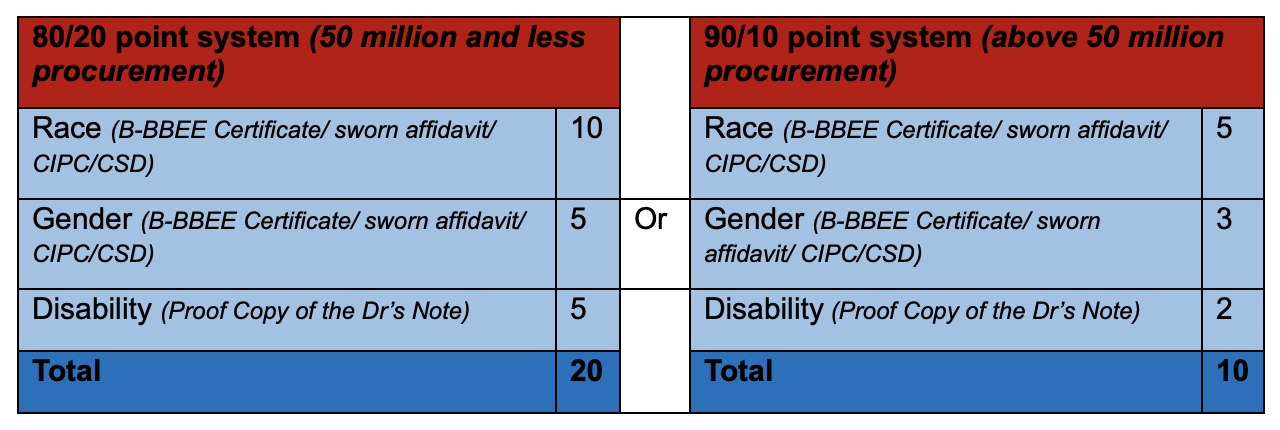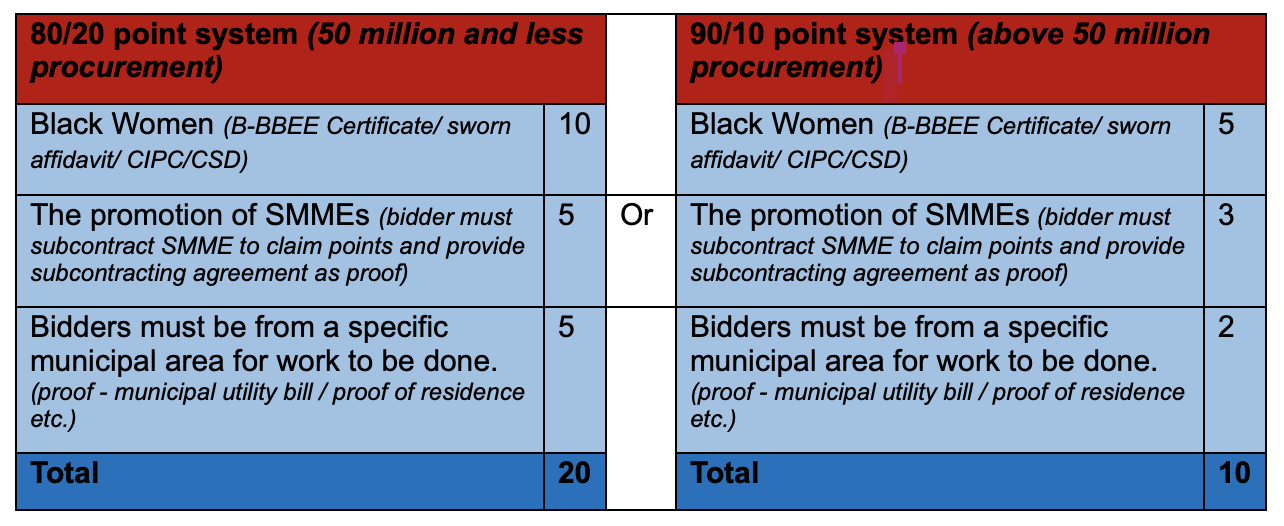 While others are saying “we are back to 2001 Preferential Procurement Regulations (PPR)”, Sanele Khomo, Deputy Director: SCM Transversal Policies at the KwaZulu-Natal Provincial Treasury, tells SmartProcurementNews that in fact we are dealing with a new phenomenon. It is now well known that South Africa has started implementing the Preferential Procurement Regulations of 2022, replacing the 2017 PPR. For colleagues who might be asking themselves what the PPR22 is, here is the brief background.
While others are saying “we are back to 2001 Preferential Procurement Regulations (PPR)”, Sanele Khomo, Deputy Director: SCM Transversal Policies at the KwaZulu-Natal Provincial Treasury, tells SmartProcurementNews that in fact we are dealing with a new phenomenon. It is now well known that South Africa has started implementing the Preferential Procurement Regulations of 2022, replacing the 2017 PPR. For colleagues who might be asking themselves what the PPR22 is, here is the brief background.
These regulations are as a result of Section 5 of the Preferential Procurement Policy Framework Act; Act No.5 of 2000 (PPPFA). This section requires the Minister to promulgate regulations where it is necessary or expedient. The PPPFA, normally referred to as an enabling Act, is a product of the Constitution of the Republic of South Africa (RSA). Section 217(3) of the RSA Constitution instructs the country’s parliament to pass the legislation that will provide the necessary framework to be used by organs of State when applying categories of preference when procuring goods and services.
Now the question is, where to from here? Maybe before we answer that question, Procurement and SCM Practitioners may also want to know why we are here? So let us drill into that a bit. The Afribusiness (now Sakeliga) successfully challenged the PPR17, a matter that dragged all the way up to the Constitutional Court of the Republic. The business wing of AfriForum successfully argued that the 2017 regulations were unlawful and sought to put the cart before the horse. The Constitutional Court ruled in their favour and now we are here.
The Minister of Finance, on the 4th of November 2022, promulgated new regulations with the effective date of 16 January 2023. This is now the new phenomenon that procurement practitioners are finding it difficult to navigate through. The difficulty is that, unlike the 2017 regulations that were bringing in uniformity, the new regulations require that each organ of State develop its preferential procurement policy to address the empowerment of historically disadvantaged persons. Now everyone is asking … where to from here? Let me help you navigate. Key principles that will make your life easier as the practitioner when developing these policies are:
- Include the simple elements and do not try to bring in initiatives that will attract litigation against your institution, as this is new to most people. Give yourself some time to understand the PPR22 implementation before reviewing again to add more policy provisions.
- Always align your specific goals, as provided for by the new regulations, with the relevant legislation. It could either be PPR22, Reconstruction and Development Programme (RDP) Goals or Broad Based Black Economic Empowerment Act (B-BBEEA) as provided for by its Section 10(b). It is safe to say, if your set specific goals cannot find a link with either of the mentioned enablers, you might be in for a surprise.
- Define your key terms in line with the relevant legislation, and if the definition is not available in the legislation, use the common definition that is available in the dictionary.
The key phrase in the new regulations and our policies is Specific Goals. Specific goals mean specific goals as contemplated in section 2(1)(d) of the Act which may include contracting with persons, or categories of persons, historically disadvantaged by unfair discrimination on the basis of race, gender and disability, including the implementation of programmes of the Reconstruction and Development Programme as published in Government Gazette No. 16085 of 23 November 1994. In developing your policy, you would have to make provisions on how you are going to allocate points during procurement. The following is an example that can be used to allocate points for Persons Historically Disadvantaged:
Example of Points Allocation

Practitioners’ may also use the other legally acceptable mechanisms to verify the bidders who are claiming the preference points. The B-BBEE and RDP Goals mentioned above can also be in the mix when allocating preference points. Here is a practical example:

There are many ways to allocate the preference points for specific goals. The key is just to make sure that they find a link with the enabling legislation. Setting specific goals that do not link to the relevant legislation will obviously lead to irregular expenditure.
So, this is where we are. Practitioners must be mindful that any procurement opportunity advertised on and from the 16th is affected by the 2022 regulations. In a case where they use 2017 regulations, it will definitely be irregular. What happens if you haven’t reviewed and aligned your policy? You may only procure using Petty Cash.
By Sanele Khomo, Supply Chain Management Specialist



























